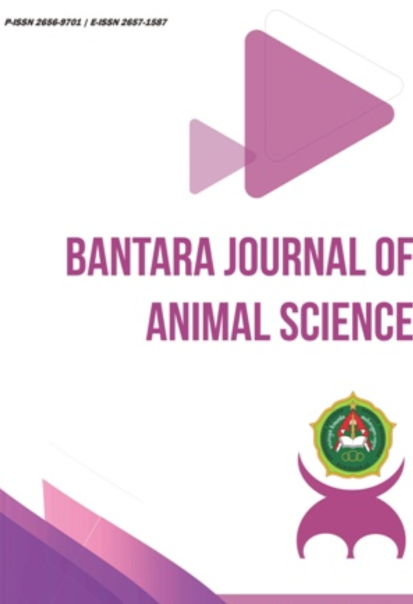The Effect of Additional Carrots Juice to The Making of Yoghurt Assessed from Physical, Chemical and Organoleptical
DOI:
https://doi.org/10.32585/bjas.v3i1.1296Abstract
Yoghurt was one form of beverage products from milk processing that utilizes microbes in the fermentation of fresh milk into a semi-solid emulsion product with a more acidic taste. The aim of this research was to know the effect of carrot juice and optimal addition were: color, organoleptic quality (aroma, texture, color and taste), vitamin C, WHC of yoghurt. The materials used were fresh milk, carrot juice, starter plain yoghurt. The method used in this research is experimental method with Randomized Completely Block Design of 5 treatments namely the addition of carrot juice in yoghurt with concentration 0%, 10%, 15%, 20%, and 25% of milk volume (1000 ml), with each treatment was done with 4 blocks. The data analysis used variance analysis, followed by Duncan Multiple Range Test. The results showed that the addition of carrot juice 20% in the manufacture of yoghurt with different concentrations gave a very significant effect difference (P<0.01) on the lightness (L*), yellowness (b*), vitamin C and WHC as well as a real effect (P <0,05) to the redness color (a*) and not not give significant effect (P>0,05) to pH, syneresis and lactic acid bacteria. The result showed that the concentration of adding carrot juice is 20%, which results in the best quality yogurt drink with the following average values of vitamin C; 15.13%, color; 59.95 (L), 19.30 (a *), 25.85 (b *), WHC; 25% and organoleptic; 3.75 (aroma), 3.98 (color), 3.40 (taste) 4.44 (texture), pH; 4.75
Keyword: carrot juice, physical quality, yoghurt
Downloads
References
Ace, I. S and S. Supangkat. 2006. Effect of Starter Concentration on Yogurt Characteristics. J. Agricultural Extension. 1 (1): 1-5.
Astuti, M. 2007. Introduction to Statistics for Animal Husbandry and Animal Health. Binasti. Bogor.
Harjiyanti, M.D., Y.B Pramono, S. Mulyani. 2013. Total Acid, Viscosity, And Love For Yogurt Drink With Mango Juice (Mangifera Indica) As Natural Flavor. Food Technology Application Journal. 2 (2): 104-107.
Hashimoto, T. and T. Nagayama, 2004. Chemical Composition of Ready To Eat Fresh Carrot. J. Food Hyg. Soc. Japan, 39: 324-328.
Jannah, A. M. Legowo, A. M. Pramono, Y. B. Baarri, A. N. A. and Abduh, S. B. M. 2014. Total Lactic Acid Bacteria, pH, Acidity, Taste and Favorite Yogurt Drink with the Addition of Star Fruit Extract. Diponegoro University, Semarang. 3 (2): 7-11.
Nurwantoro and S. Mulyani. 2013. Basic Textbook of livestock product technology, Faculty of Animal Husbandry Diponegoro University. Semarang.
Raum, R., 2003. Microbiological Quality of Health Food and Organic Foods. Neth. Milk Dairy J., 14: 130-134.
Routray, N And H.N. Mishra. 2011. Scientific And Technical Aspects Of Yogurt Aroma And Teste: A Review. Comprehensive Reviews In Foodscience And Foodsafety. Vol 10.
Saleh, E. 2004. Basis of Processing of Milk and Cattle Products. USU Digital Library. Field.
Salwa A.A., Galal, E.A., and Neimat A.E. 2004. Carrot Yogurt: Sensory, Chemical, Microbiological Properties And Consumer Acceptance. Pakistan Journal of Nutrition. 3 (6): 322-330.
Sukarini, N. E. 2020. Fermentation of Carrot Juice Waste (Daucus carota L) with Probiotics and Utilization in Races of Chicken Layers on Egg Production and Quality. Bantara J. Anim. Sci. 2(2) : 73-81.
Wahyu, W. 2002. Milk Fermentation Biotechnology. Center for Biotechnology Development. Muhamadiyah University Malang. Poor.
Winarno, F.G. 2007. Food Chemistry and Nutrition. PT Gramedia Pustaka Utama. Jakarta.





